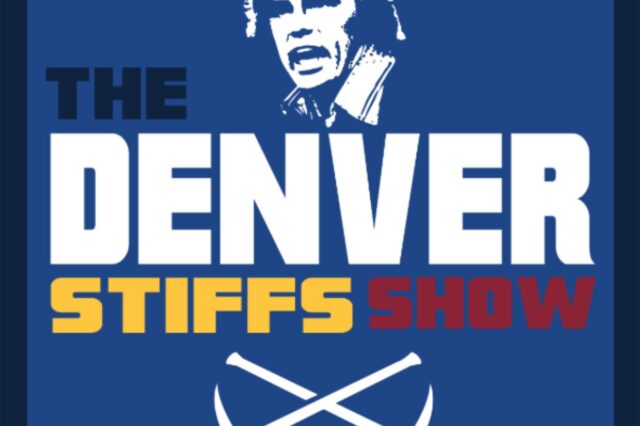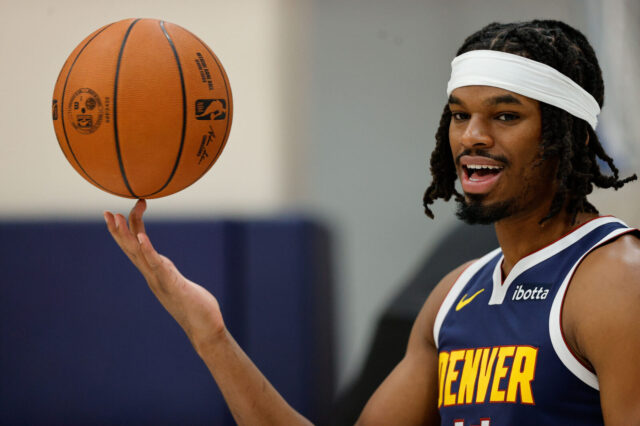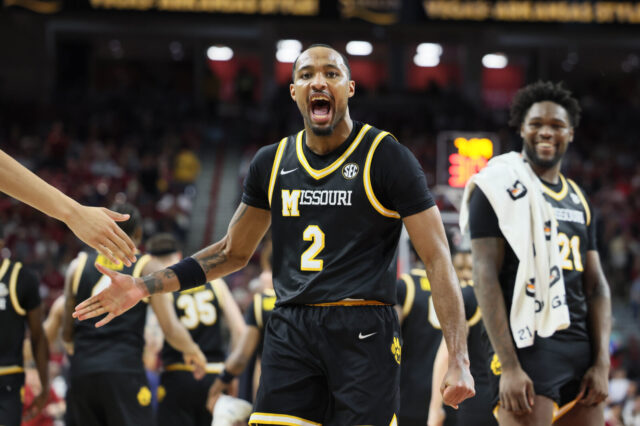Will the changing of the backup shooting guard affect the Nuggets in the short and/or long term?
The Denver Nuggets completed two trades prior to the deadline during this trade season. The first deal sent out fan favorites Malik Beasley and Juancho Hernangomez, along with young prospect in Jarred Vanderbilt. Beasley was the only one playing rotation minutes, and his shooting and athleticism in the backcourt helped turn the Nuggets into a dangerous offensive team when he shared the floor with Nikola Jokic last season. However, the Nuggets became far less dangerous offensively this season with Beasley on the floor than last season. This year with Jokic next to him, the Nuggets had a 109.1 Offensive Rating, which is average. Last year? That number was all the way up at 115.8, an elite mark.
Teams figured out how to counter lineups featuring Beasley, and it didn’t help that the Florida State product’s shooting regressed this season. A 40% three-point shooter in 2018-19, Beasley is down to 36% in 2019-20, which wouldn’t make as much of a difference if Beasley wasn’t finishing well from two-point range either. Beasley shot a career worst 42.1% inside the arc, and that finishing ability when asked to do more than just hit spot-up jumpers is important in a playoff setting.
With the prospect of restricted free agency for Beasley and Hernangomez looming, the Nuggets decided to move on. In a new situation, both should flourish if given the opportunity to do so; however, the Nuggets needed a contributor now, so they found a way to get an upgrade in Jordan McRae.
Below you will find a profile on McRae’s 2019-20 season thus far. I completed a similar exercise for Noah Vonleh and Keita Bates-Diop yesterday, and their profiles can be found here. But now, let’s get to know Jordan McRae
Jordan McRae – Shooting Guard, 6-foot-5, 179 pounds
Per Game Stats: 29 games, 22.6 minutes, 12.8 points, 2.8 assists, 3.6 rebounds, 0.7 steals
Shooting Stats: 42.0 Field Goal % — 37.7 Three-Point % — 77.1 Free Throw %
Advanced Metrics: 52.3% True Shooting, 2.16 Assist:Turnover, -2.5 Box Plus-Minus, -0.26 Real Plus-Minus
Breakdown: Jordan McRae is a shooting guard who bounced around the league, specifically the G-League, to begin his career. As a rookie in 2015-16, he found himself on the end of the Cleveland Cavaliers bench the year they won a championship with LeBron James, Kyrie Irving, and Kevin Love leading the charge. He spent the next year in Cleveland for a brief stretch before falling out of the NBA. His journey took him to the G-League in 2018-19 where he starred for the Washington Wizards’ G-League affiliate, the Capital City Go Go. In 31 G-League games, McRae averaged 30.3 points on 22.1 field goal attempts per game. The Wizards called him up for 27 games that year where he scored 5.9 points in just 12.3 minutes per game.
With John Wall out for the season and on a roster bereft of guard talent outside of Bradley Beal, McRae finally received a steady opportunity with the Wizards as a bench scorer. While Davis Bertans stole the thunder as Washington’s elite bench shooter, McRae has quietly put together quite the resumé this season. As noted above, he averages 12.8 points in just 22.6 minutes per game. Converted to Per 36 minute numbers, McRae’s 20.4 points per 36 are third on the team, behind Beal and versatile big man Moritz Wagner.
With Beal out for several games this year and point guards Isaiah Thomas and Ish Smith being generally unreliable, McRae shouldered a reasonably heavy burden as a creator off the dribble. His 4.8 pull up jumpers attempted per game rank third on the Wizards behind Beal and Thomas and would rank second on the Nuggets, ahead of Will Barton and behind only Jamal Murray. He wasn’t very efficient in that role with a 39.3 eFG%, ranking 53rd out of 58 players to attempt at least as many pull ups.
Catch and shoot attempts were another story entirely. Most of these attempts were three pointers, and he made 41.7% of his catch and shoot threes. That would rank third behind only Paul Millsap and Michael Porter Jr. while ahead of Will Barton, Monte Morris, and yes, Malik Beasley.
That drastic difference in efficiency means to me that McRae was probably overextended in his role with Washington. His responsibilities were vast, and as a result, his efficiency dropped. It’s very clear he’s a capable standstill jumper shooter, and that bears out in his Play Type scoring profile.
This content is no longer available.
McRae was asked to handle the ball a lot in Washington, whether as a pick and roll creator, driving the lane in transition, or isolating 1-on-1. Those three categories made up nearly 62% of McRae’s offensive profile. McRae had shots created for him either in spot up or off-screen situations less than 25% of the time. Juxtapose that with Beasley’s profile in Denver which had him spotting up or coming off a screen over 43% of the time, and it’s easy to get excited for McRae’s time in Denver.
Expected Role: At this moment, Denver’s playoff rotation is relatively set. Denver’s five starters (Jamal Murray, Gary Harris, Will Barton, Paul Millsap most likely, and Nikola Jokic) will all play in every playoff game. Behind them, Monte Morris, Michael Porter Jr., and Jerami Grant are the three players I expect to join them every single night. If there needs to be more size on the floor, Mason Plumlee can fill that role (assuming health). If there needs to be defense, Torrey Craig is the right man for the job.
But in the case of extra shooting, I expect McRae to be the player Michael Malone calls upon to space the floor. This was the role Beasley filled in the playoffs last year, and he filled it well, shooting 40.4% from three while playing in all of Denver’s 14 playoff games. McRae feels like the right candidate to space the floor at shooting guard this year though. While Monte Morris may be a better shooter off the catch, McRae’s size at 6’5 makes him less of a candidate to give up points defensively.
During the regular season though, I expect McRae to play nearly every single game to potentially build some chemistry with Denver’s second unit prior to a playoff run. He will need time growing accustomed to a new role with new responsibilities, and while he will do less in Denver than he did in Washington, there’s a good chance he will be more effective on a per-minute basis. McRae had a 24.8% Usage Rate when he was on the floor in Washington. Beasley’s was 20.4% this season, and I expect McRae to mirror Beasley in that aspect when he figures out his role in the rotation.
With the Nuggets currently nursing injuries in their frontcourt, I would expect Denver to play small with Morris at the 1, McRae at the 2 and Craig at the 3, Porter at the 4, and Grant at the 5 when both of those big guys come back healthy. That lineup has plenty of spacing but also some length and athleticism. Denver will figure out who to play when Plumlee returns to full health, but I would be surprised if McRae was entirely cut off from the rotation at that point. Beasley was rarely cut off entirely, despite playing relatively few minutes.
It will never be remembered fondly when Denver decided to trade Beasley and Juancho to the T-Wolves, but it was a necessity to ultimately do right by those players and respect their trade demands. Now, Denver gets back a player who’s just happy to be in the NBA again and willing to fill a role. Jordan McRae will help the Nuggets get through the rest of the year, possibly play real minutes in the playoffs depending on the matchup, and potentially replace most, if not all, of what Beasley offered on a nightly basis.
And despite what the Nuggets lost with Beasley, Juancho, and Vando in the locker room, it seems like McRae will be a good player to have around as well.
I’m looking forward to see what’s next for the veteran shooting guard. He should bring shooting, a nice skill level, and versatility to the bench unit. He may not be at his best with the ball in his hands all the time, but it’s nice to know that he can fill that void on occasion.
And for the Nuggets, that’s all they really need right now.


